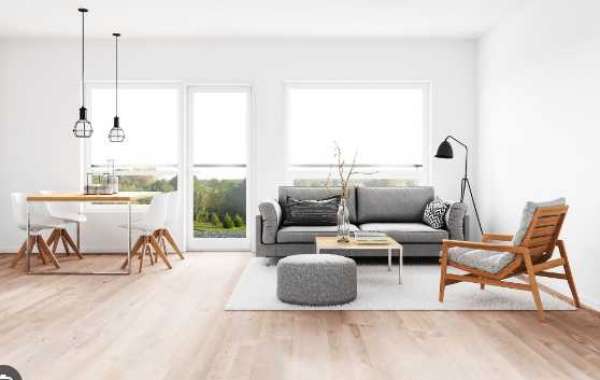Understanding Interior Design:
Interior design is an art form that combines creativity, functionality, and aesthetics to create captivating spaces within the confines of a structure. It involves the careful selection of colors, furniture, lighting, and other elements to optimize the functionality and visual appeal of a space. The design choices made can significantly impact the mood, atmosphere, and overall well-being of the occupants.
The Philosophy of Minimalism:
Minimalism, as a design philosophy, embraces the concept of "less is more." It seeks to simplify spaces by removing unnecessary elements and focusing on essential features. Minimalist interiors are characterized by clean lines, open spaces, and a limited color palette. The goal is to create a calm and uncluttered environment that promotes relaxation, clarity, and mindfulness.
Key Principles of Minimalist Interior Design:
a) Decluttering: The first step in embracing minimalism is decluttering your space. Remove items that are not essential or do not serve a purpose. This process creates a sense of openness and allows the remaining elements to shine.
b) Simplified Color Palette: Minimalist interiors typically employ neutral colors such as whites, grays, and earth tones. A subdued color scheme promotes a sense of tranquility and allows the focus to be on the form and function of the space.
c) Functional Furniture: Minimalist design emphasizes functional furniture that serves a purpose without unnecessary ornamentation. Clean lines and sleek designs are preferred over elaborate and bulky pieces.
d) Abundant Natural Light: Maximizing natural light is crucial in minimalist interiors. Large windows, skylights, and light-colored surfaces enhance the feeling of spaciousness and bring a sense of the outdoors inside.
e) Thoughtful Use of Space: Minimalist design makes efficient use of space, ensuring every area serves a purpose. Open floor plans and multi-functional furniture help create an uncluttered and adaptable environment.
Benefits of Minimalist Interior Design:
a) Enhanced Well-being: By eliminating visual distractions and creating serene spaces, minimalism can have a positive impact on mental and emotional well-being. A clutter-free environment promotes relaxation and reduces stress
b) Increased Productivity: Minimalist interiors foster a sense of focus and clarity, allowing individuals to concentrate on tasks without being overwhelmed by unnecessary visual stimuli.
c) Time and Energy Efficiency: With fewer items to clean and maintain, minimalist interiors save time and energy, allowing homeowners to focus on more important aspects of their lives.
d) Sustainable Living: Minimalism aligns with sustainable living principles by discouraging excessive consumption and encouraging the use of durable, high-quality items that have a longer lifespan.
Conclusion:
In a world filled with constant stimulation, the philosophy of minimalism offers a breath of fresh air. By embracing simplicity and decluttering our living spaces, we can create interiors that promote tranquility, mindfulness, and well-being. The principles of minimalism provide a foundation for thoughtful and intentional design choices, transforming our homes into havens of serenity. Whether you seek a complete overhaul or subtle changes, incorporating minimalism into your interior design will undoubtedly leave a lasting impact on your daily life.
Click Here To View More Info- https://www.minimalism.one/










